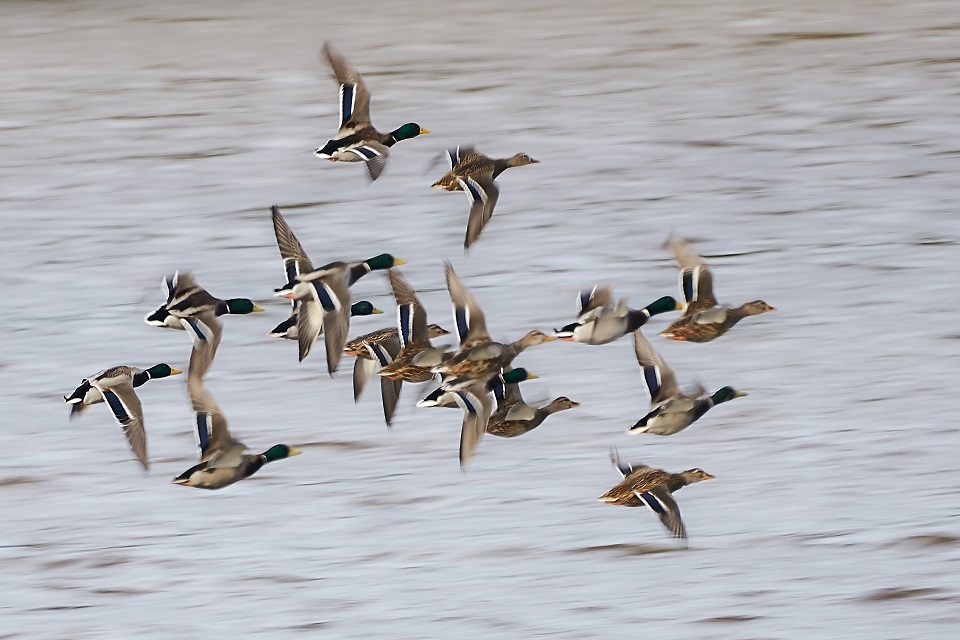National Farmers' Union
Biosecurity and AI – essential information for poultry keepers
Updated 23 July 2025
It's important all poultry keepers exercise stringent biosecurity to reduce the risk of avian influenza incursion in their birds. Use the following tips to review your biosecurity protocols – including an updated biosecurity best practice photobook.
This page forms part of our biosecurity awareness content.
What's on this page?
With migratory bird patterns expected to heighten the risk of AI cases during the winter months, it is vital to ensure all biosecurity measures are robust and strictly followed.
Essential advice for effective biosecurity
Julian Sparrey, Group Technical Director at Livetec Systems, says one of the highest risk points for disease entering a shed is via human movement.
“Most know that human biosecurity is crucial, but it’s got to be done properly, or there’s no point in doing it at all,” he says.
“You can’t just wash your boots down in disinfectant, you need to change into clean boots and overalls, without contaminating them in the process, to be effective.”
Avian influenza is most likely to enter a flock through indirect wild bird contact, either via respiratory secretions, or, most commonly, through infected bird droppings. Bird and rodent proofing is also an essential process to minimise the risk of contamination.
Mr Sparrey says most producers put one inch mesh on all shed entry points during the outbreaks in 2022, but he advises these are checked for damage, as they are likely to have deteriorated over time.
“Even if wild birds aren’t infected with the disease, they can be carrying it on their feet or feathers, the same goes for rodents, so it’s imperative to do everything in your power to stop them accessing sheds,” he says.
“It’s obviously harder for free-range producers to eliminate these risks altogether, but you can still take precautions.
“For example, I’d urge farmers to discourage wild birds from landing on sheds – use spike strips and deterrents on roofs to put them off perching.”
He also suggests not only looking at working to eliminate puddles and standing water on the range, but also in farmyards, as the AI virus can survive in cold water for up to 100 days, and easily be transported into sheds by wildlife or humans.
Assess your risk levels
...Continued: https://www.nfuonline.com/updates-an...pers/#examples
Biosecurity and AI – essential information for poultry keepers
Updated 23 July 2025
It's important all poultry keepers exercise stringent biosecurity to reduce the risk of avian influenza incursion in their birds. Use the following tips to review your biosecurity protocols – including an updated biosecurity best practice photobook.
This page forms part of our biosecurity awareness content.
What's on this page?
- Biosecurity advice from Livetec Systems
- Biosecurity checklist
- Biosecurity posters to print and share
- UPDATED: Examples of good and poor biosecurity
With migratory bird patterns expected to heighten the risk of AI cases during the winter months, it is vital to ensure all biosecurity measures are robust and strictly followed.
Essential advice for effective biosecurity
Julian Sparrey, Group Technical Director at Livetec Systems, says one of the highest risk points for disease entering a shed is via human movement.
“Most know that human biosecurity is crucial, but it’s got to be done properly, or there’s no point in doing it at all,” he says.
“You can’t just wash your boots down in disinfectant, you need to change into clean boots and overalls, without contaminating them in the process, to be effective.”
Avian influenza is most likely to enter a flock through indirect wild bird contact, either via respiratory secretions, or, most commonly, through infected bird droppings. Bird and rodent proofing is also an essential process to minimise the risk of contamination.
Mr Sparrey says most producers put one inch mesh on all shed entry points during the outbreaks in 2022, but he advises these are checked for damage, as they are likely to have deteriorated over time.
“Even if wild birds aren’t infected with the disease, they can be carrying it on their feet or feathers, the same goes for rodents, so it’s imperative to do everything in your power to stop them accessing sheds,” he says.
“It’s obviously harder for free-range producers to eliminate these risks altogether, but you can still take precautions.
“For example, I’d urge farmers to discourage wild birds from landing on sheds – use spike strips and deterrents on roofs to put them off perching.”
He also suggests not only looking at working to eliminate puddles and standing water on the range, but also in farmyards, as the AI virus can survive in cold water for up to 100 days, and easily be transported into sheds by wildlife or humans.
NFU members can save money on Livetec systems. Visit: NFU member rewards | Livetec Systems
Assess your risk levels
...Continued: https://www.nfuonline.com/updates-an...pers/#examples

Comment